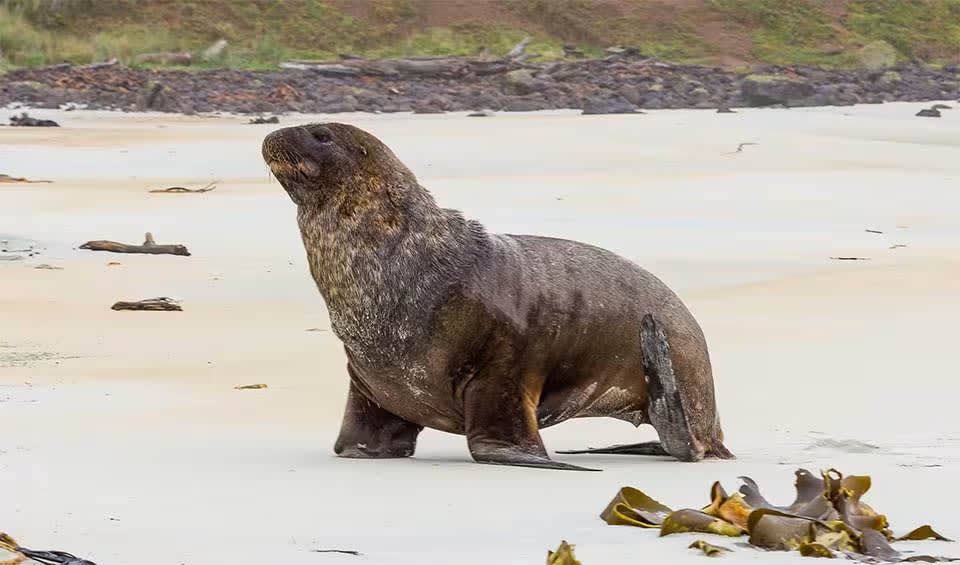Otariidae – Eared seals
The sea lions! Row through water using their long font flippers
Eared seals are a distinct family of pinnipeds that include species commonly referred to as sea lions and fur seals. This family is set apart from true seals (family Phocidae) by the presence of external ear flaps, or pinnae, and their more robust forelimbs. These anatomical differences have led to varying lifestyles and abilities within the world of seals and sea lions.
The eared seals are renowned for their adaptability to aquatic and terrestrial environments. Their larger and stronger foreflippers are not just paddles for swimming but also support their bodies, allowing them to “walk” on land. This significant adaptation gives them an advantage over their earless cousins, enabling them to maneuver easily on rocky shores, sandy beaches, and even cliff faces where they haul out for rest, breeding, and molting.
Despite their adaptability, eared seals have not been immune to the impacts of human activities. Historically, they have been hunted extensively for their fur and oil, leading to dramatic population decline. While hunting has decreased due to conservation efforts and international regulations, eared seals continue to face threats from illegal poaching, entanglement in fishing gear, competition for food with commercial fisheries, and habitat degradation.
The amphibious nature of eared seals is also of interest. They forage in the ocean, diving to depths to catch fish and squid, which constitute the majority of their diet. However, critical life events such as mating, giving birth, and nursing their young occur on land or ice. Females are exceptionally devoted, providing milk to their pups for several months before weaning them to fend for themselves in the sea.
Conservation programs like the Plastic Pollution Free Galapagos aim to protect marine life, including the Galapagos fur seal, from the detrimental effects of plastic pollution. Plastics in the ocean can lead to ingestion and entanglement, which are lethal to marine animals.
Genera in this family
Sea lions
Muscle strength enables males to store more oxygen in the blood and enjoy deeper, longer dives
They are able to hold their breath for as long as 40 minutes, and the deepest dive ever recorded is 424 m (140 ft)
The only native and restricted pinniped in Australia
Unfortunately, they are commonly killed for their habits of damaging fishing nets and stealing fish from fishing and farming operations
One of the largest mammals found in New Zealand and the rarest sea lion species in the world
Fur seals
All fur seals enjoy swimming on their backs, making a classic ‘jug-handle’ position
Able to spend long periods out in the open sea, some pups will stay up to 22 months before returning to land








